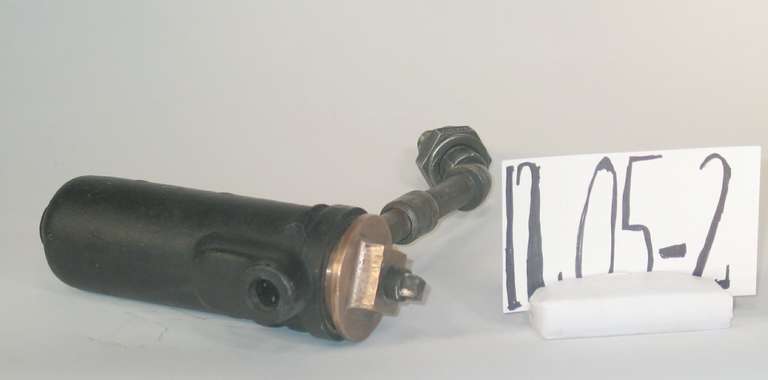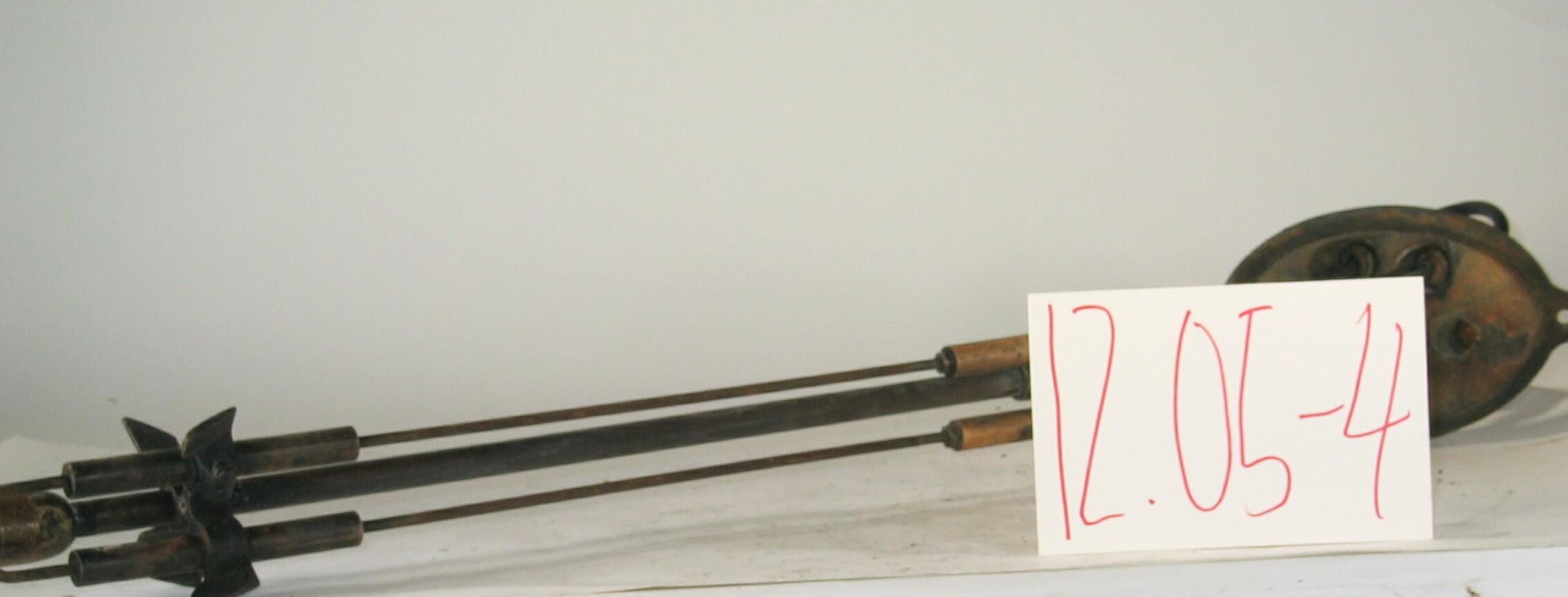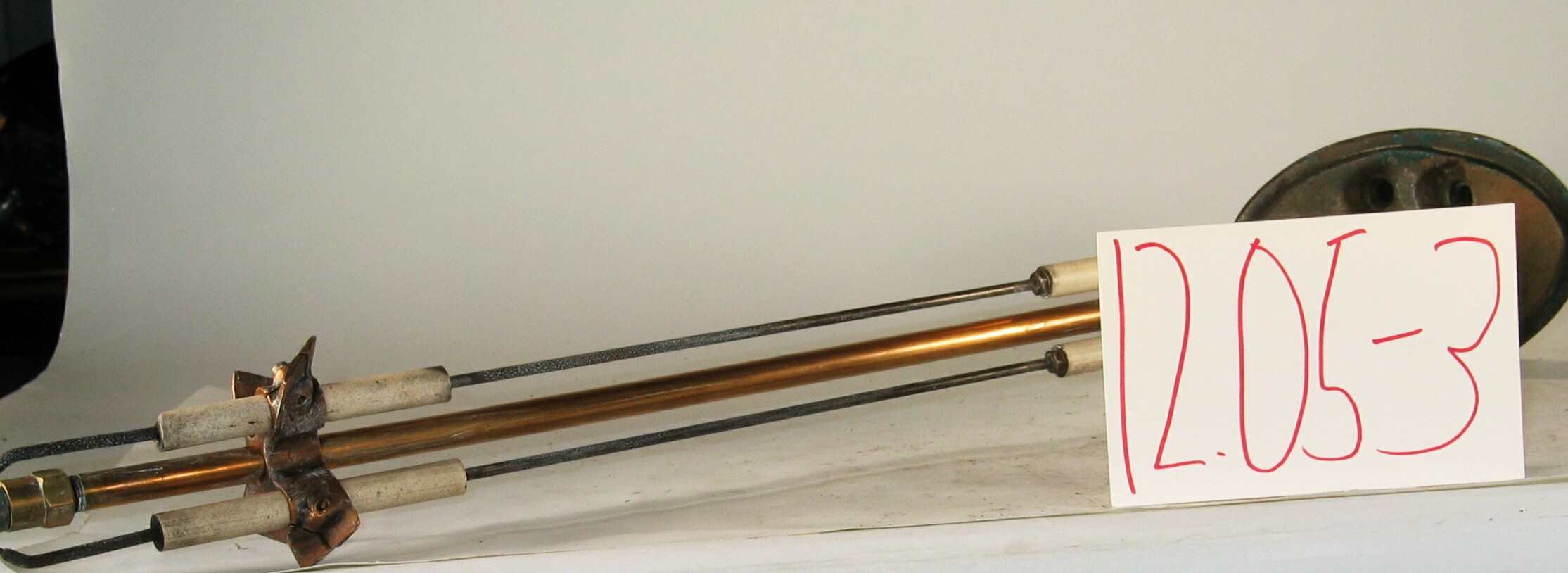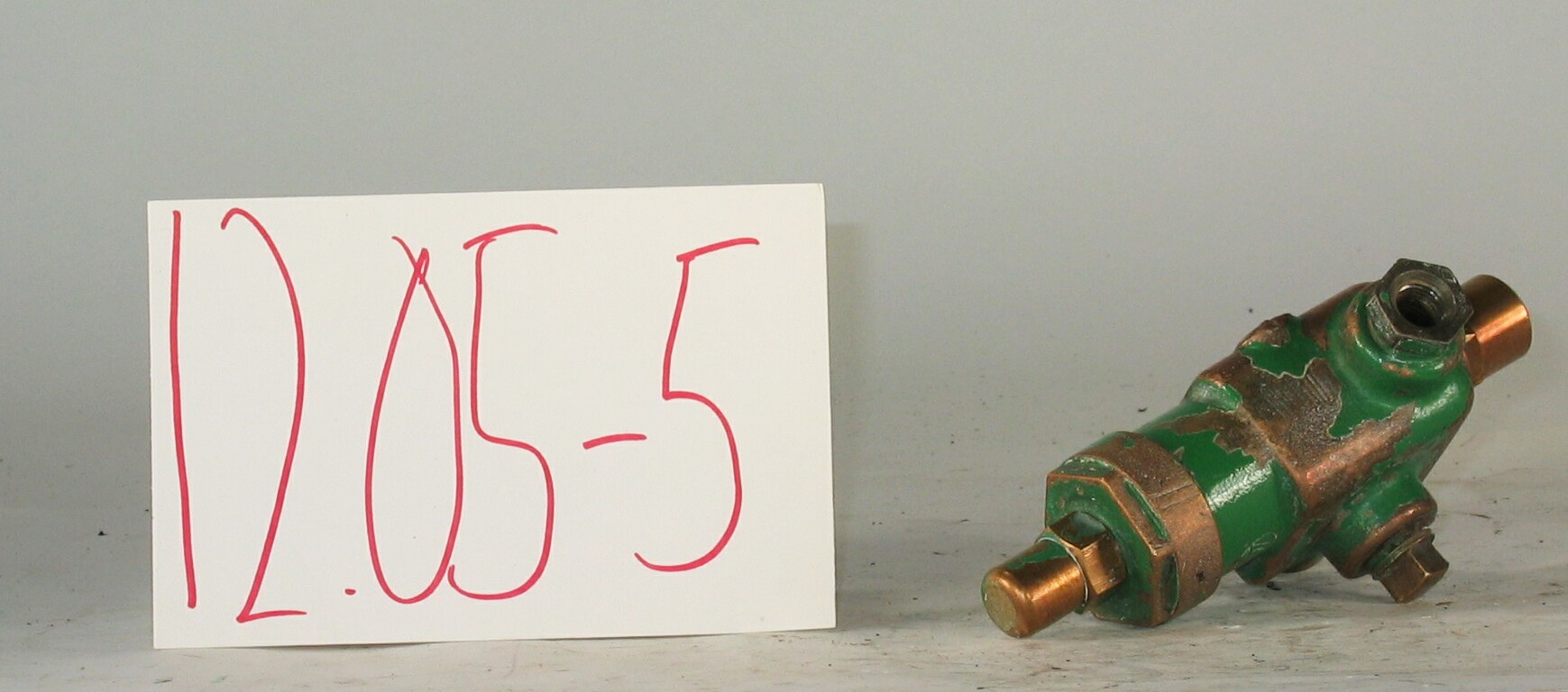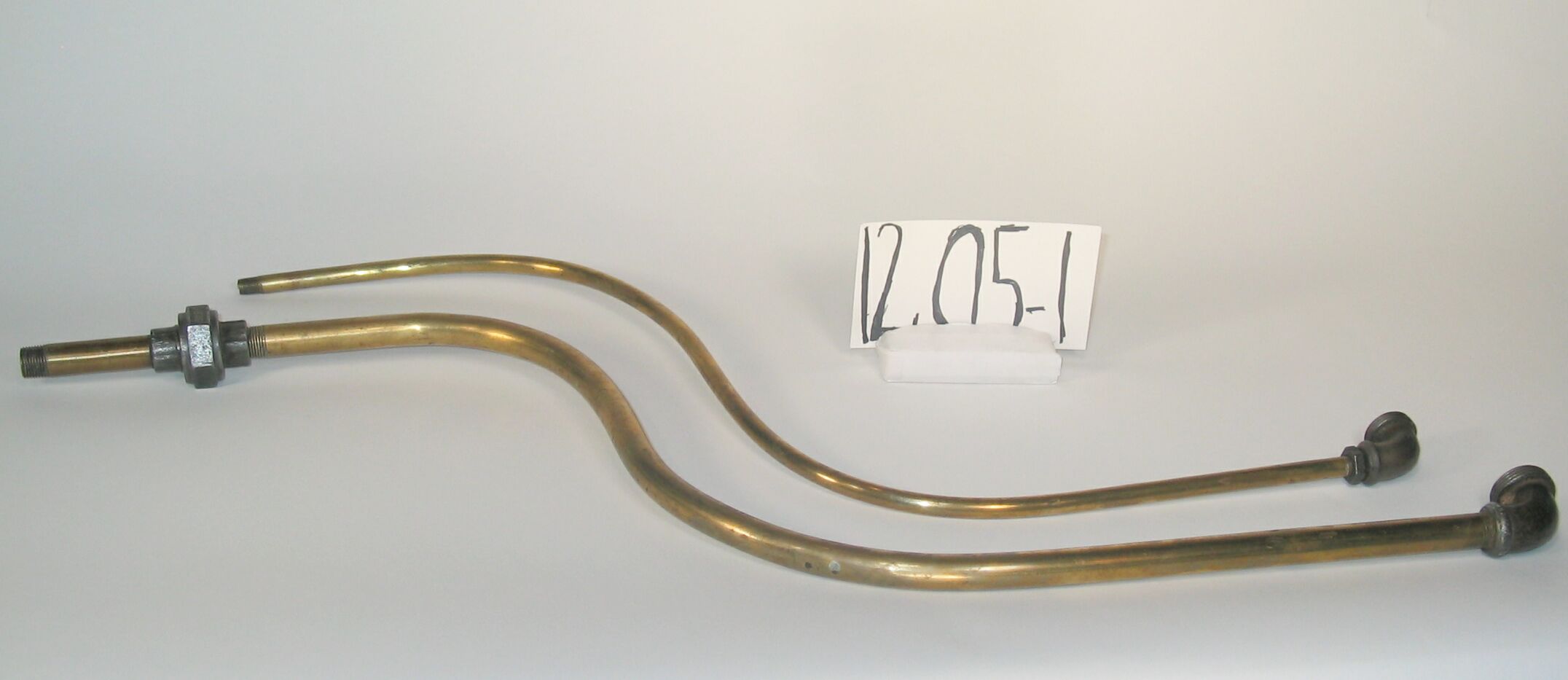12.05-2: 1929 Cast Iron, Fuel Filter Assembly

| HHCC Accession No. 2006.136 | HHCC Classification Code: 12.05-2 |
|---|
Description:
Cast iron, fuel filter assembly with 3/8 inch IPS, black iron pipe and union inlet connection to oil burner, with brass machined screw top, and 3/8 oil priming plug, ground brass seat and cast brass internal screen cartridge, with clearable brass screen filter media, all beautifully crafted, in keeping with the values of the period, using the materials and techniques of the times, manufacturer unknown, 1929.
Group:
12.05 Pressure Atomizing Oil Burner Equipment and Systems - Firing Assemblies
Make:
Unknown
Manufacturer:
Unknown
Model:
16 LB
Serial No.:
Size:
3 inch dia x 8 inch long plus pipe oulet connection
Weight:
5 lbs.
Circa:
1929
Rating:
Exhibit, education, and research quality, illustrating the care given to the engineering, design and manufacture of peripheral equipment for automatic oil heating in the 1920’s giving it a sense of solid craftsmanship and dependability.
Patent Date/Number:
Provenance:
From York County (York Region) Ontario, once a rich agricultural hinterlands, attracting early settlement in the last years of the 18th century. Located on the north slopes of the Oak Ridges Moraine, within 20 miles of Toronto, the County would also attract early ex-urban development, to be come a wealthy market place for the emerging household and consumer technologies of the early and mid 20th century.
This artifact was discovered in the 1950’s in the used stock of T. H. Oliver, Refrigeration and Electric Sales and Service, Aurora, Ontario, an early worker in the field of agricultural, industrial and consumer technology.
Used on an automatic oil heating system, in an estate home, in York County [York Region] north of Toronto
Type and Design:
Cast iron body 3/8 inch IPS, black iron pipe and union inlet connection to oil burner Machined brass screw top, 3/8 IPS oil priming plug,
Ground brass seat Cast brass internal screen cartridge and brass screen filter media, Beautifully crafted using the materials and techniques of the period.
Construction:
Material:
Special Features:
Accessories:
Capacities:
Performance Characteristics:
Operation:
Control and Regulation:
Targeted Market Segment:
Consumer Acceptance:
Merchandising:
Market Price:
Technological Significance:
A marker of the attention given by manufacturers, in the early years of automatic oil heating in Canada to giving it a sense of solid craftsmanship, sturdy construction, dependability and good taste. Brass and bronze, because of their special properties [malleability and corrosion resistance] and the relative ease of manufacture, were material of choice for much speciality manufacturing in the 1920-40’s, a period prior to the development of plastics, which over the next half century would replace these metals and derivatives in many applications. During these early years massive quantities of brass would be used in speciality manufacturing areas in fluid flow applications such as automatic oil heating and refrigeration. Here corrosion free operation, as well as appearance were important factors in engineering and the market place. [see for example ID#259 to 264]
Industrial Significance:
Socio-economic Significance:
This was a period long before the advent of throwaway, treated paper, oil filter cartridge, and indeed well before the throwaway era of anything and every thing. It stands as an icon of permanence and re-usability, year after year, in keeping with the value complex of the period and the emphasis it gave, among other things, to thrift, saving and good household management practices. Beyond its many engineering benefits [malleability and corrosion resistance] brass was the material of cultural choice in the early years of the 20th century. It was a cultural imperative, used effectively by the automatic oil heating industry to appeal to the up-scale market of the day dominated by Anglo-European settlement. For in the 1920’s it was largely the economic elite’s of the time that defined the market for automatic home heating. The Canadian public, those who could well afford laboursaving and comfort machines for the home, was plagued with feelings of uncertainty about contrivances such as automatic oil heating and the mechanical refrigerator. The concern was for their quality, safety, reliability, craftsmanship and sense general of good taste. The end result was kind of a classic psychological ‘approach avoidance’ syndrome
Manufacturers had a selling job to do, and knew it. They took every opportunity to demonstrate the quality, strength, durability and reliability of their home heating equipment - as well as its “good taste”.
Shinny brass pipe and peripheral fitments were a good place to start. For they were symbols of acknowledged good taste. From the front door knocker to the dinner table, and now to the basement furnace room, well tended brass stood for care and craftsmanship, highly valued by Canadian, Edwardian Society.
Socio-cultural Significance:
Donor:
G. Leslie Oliver, The T. H. Oliver HVACR Collection

